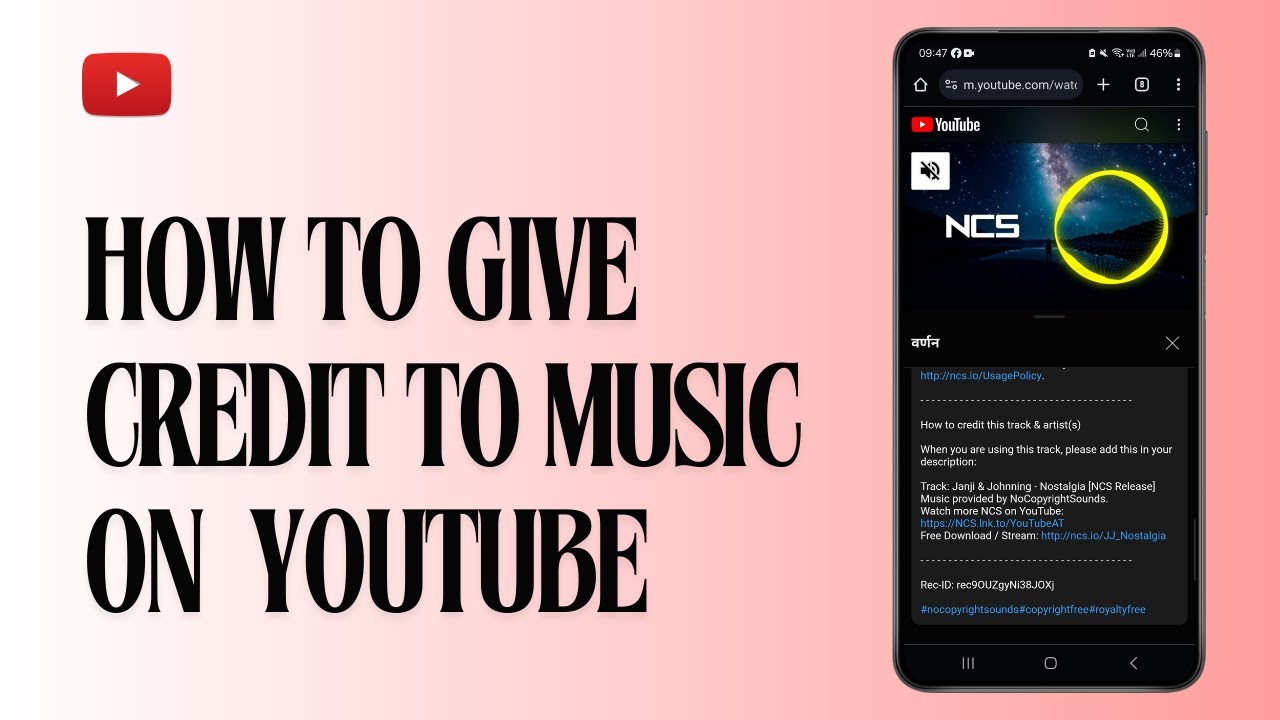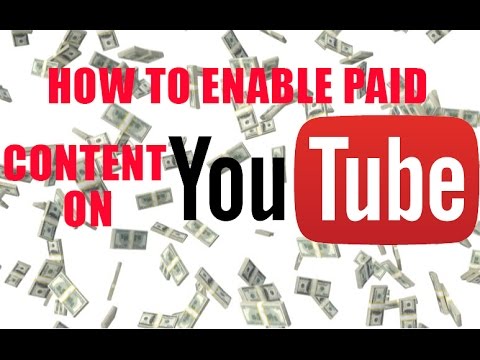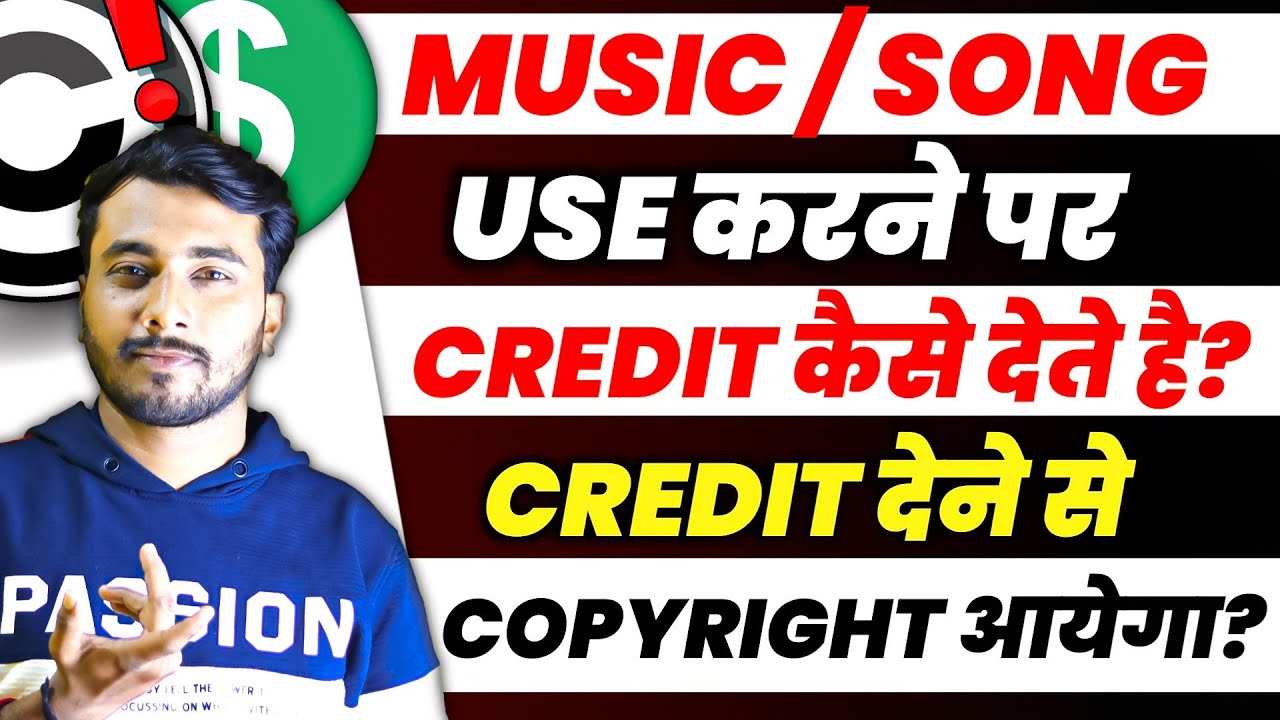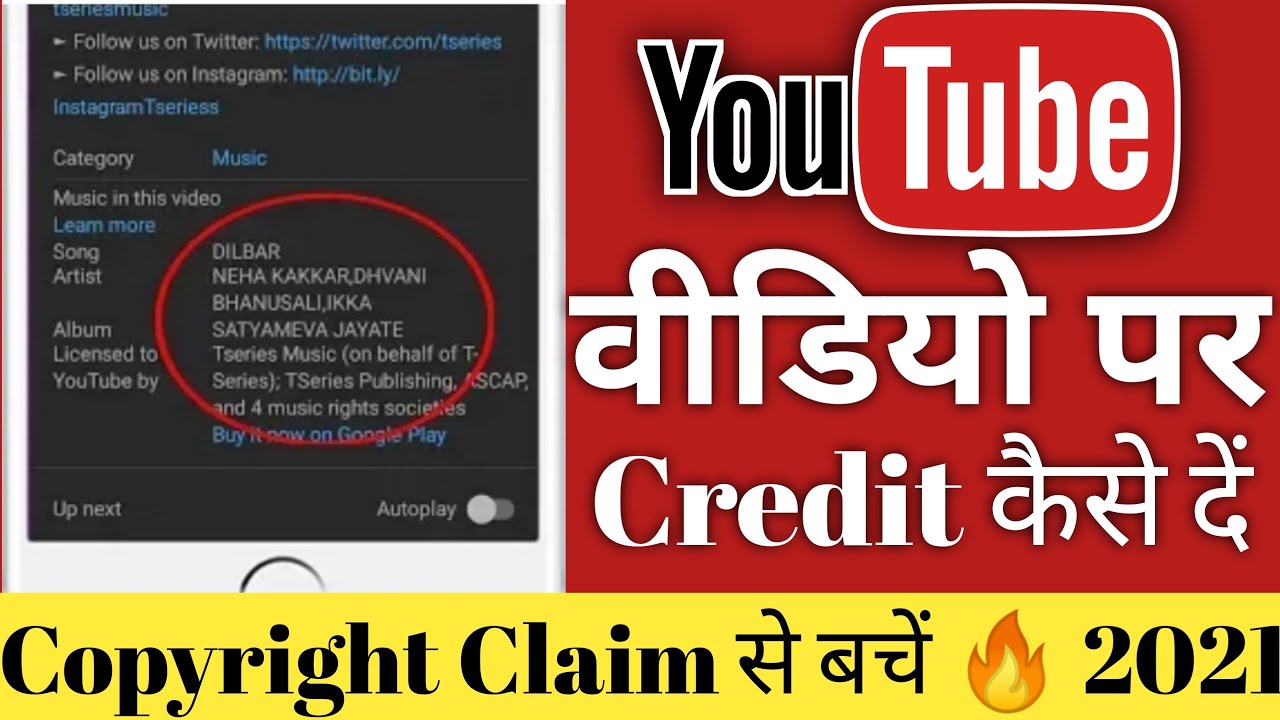In the vast world of YouTube, creators pour their hearts and souls into crafting original content. When you use someone else's work, it's essential to give credit where credit is due. Not only is this a matter of respect and ethics, but it also ensures you foster a positive community and build trust with your audience. In this post, we'll explore best practices for crediting content creators on YouTube, diving into its significance and how to do it right.
Understanding the Importance of Giving Credit

Giving credit to content creators is more than just a nice gesture; it’s a fundamental aspect of the digital landscape. Here’s why it matters:
- Respect for Original Work: Every video, image, or piece of music you come across on YouTube has a creator behind it. Crediting their work acknowledges their effort and creativity, showing you value what they bring to the table.
- Legal Protection: Copyright laws exist for a reason. Failing to credit or request permission to use someone else's content can lead to legal repercussions. By crediting properly, you protect yourself and respect the creator's rights.
- Promoting Collaboration: When you credit someone, you open the door for future collaborations. Creators appreciate being recognized, and this can lead to fruitful partnerships that enhance your content.
- Building Trust with Your Audience: Your viewers will see you as someone who respects the creative community. This approach fosters trust and encourages a positive interaction not just with your audience but also with fellow creators.
- Encouraging a Supportive Community: Giving credit helps build a culture of support on YouTube. When you recognize others’ contributions, you inspire others to do the same, creating a network rooted in respect and encouragement.
Now that we understand why giving credit is essential, let’s discuss better ways to credit content creators effectively on YouTube!
Also Read This: How to Add Music from YouTube to CapCut on Your Computer: A Detailed Guide
3. How to Properly Credit Content Creators

Crediting content creators is not just a courtesy; it's a vital part of maintaining integrity and respect in the digital age. Proper attribution acknowledges the hard work and creativity that goes into making content. Here are some tips on how to do it right:
- Use Clear and Visible Mentions: Whenever you quote or use a clip from a YouTube video, ensure that the creator’s name and the title of the video are clearly displayed. You can use phrases like “As mentioned by [Creator’s Name] in their video [Video Title].” This approach helps your audience understand where the information came from.
- Link Back to the Original Video: Include a hyperlink to the original video whenever you reference or use a creator's work. This not only directs traffic back to the content creator but also allows your audience to explore more of their content. Just make sure that the link opens in a new tab to keep your own audience engaged.
- Use Social Media Handles: If the creator has a presence on social media, don’t hesitate to mention their handle or tag them. This shows that you appreciate their work and boosts their visibility. For example, “Check out [Creator’s Handle] on Twitter for more insights!”
Ultimately, proper crediting extends beyond mere acknowledgment; it builds relationships. Content creators thrive on community, so by giving them credit, you’re contributing to a culture of mutual respect. Make it a habit to always attribute—this practice strengthens your own credibility, too!
Also Read This: How to Create a Second YouTube Channel on Mobile: Expanding Your Content
4. Best Practices for Writing YouTube Descriptions

Writing effective YouTube descriptions is a skill that can significantly enhance your video's reach and engagement. The description is your chance to tell viewers what your video is about and to encourage them to watch it. Here are some best practices to keep in mind:
- Start with a Strong Hook: The first couple of lines are crucial because they appear in the search results and give potential viewers a preview. Start with a compelling sentence that grabs attention. For example, “Are you tired of struggling with video editing? Here are the top tips to make it easy!”
- Include Relevant Keywords: Optimize your description with relevant keywords that your audience is searching for. This helps with SEO (Search Engine Optimization) and makes your video more discoverable. However, resist the temptation to “stuff” keywords—keep it natural!
- Provide a Value Proposition: Outline what viewers will gain from watching your video. You might say something like, “In this video, you will learn how to edit videos like a pro in just 10 minutes.” This sets clear expectations and encourages viewers to stay tuned.
- Utilize Timestamps: If your video is long, consider adding timestamps to help viewers navigate through content. For instance, “00:01 – Introduction, 02:30 – Key Tips, 05:15 – Conclusion.” This practice enhances user experience and keeps viewers engaged.
- Engage with CTAs: Don’t shy away from including Calls to Action (CTAs) in your descriptions. Encourage viewers to like, comment, subscribe, or check out related content. For example, “If you found this video helpful, give us a thumbs up and subscribe for more tips!”
In conclusion, a powerful YouTube description can greatly impact viewer engagement and retention. It’s your chance to connect with your audience—even before they hit play. So, take the time to craft descriptions that are engaging, informative, and respectful of other creators!
Also Read This: How Much Money Is 22 Million Views on YouTube? Revenue Breakdown
5. Tools and Resources for Content Attribution

When it comes to giving credit appropriately to content creators, several tools and resources can make this process much easier. Not only do these tools help you streamline the attribution process, but they also ensure that you maintain the integrity of the content you’re sharing.
1. YouTube’s Built-in Features: YouTube offers features such as Creative Commons licenses which allow you to reuse content under certain conditions. When you find a video that uses this license, be sure to follow the attribution guidelines specified in the description. This is a great way to legally use a creator’s content while giving them proper credit.
2. Attribution Helpers: Websites like Creative Commons provide clear guidelines on how to credit content creators. They help clarify the different licenses and what types of credits are required for each. This is particularly useful for educators, social media managers, and anyone dealing with multiple content sources.
3. Citation Generators: There are various online citation tools such as Citation Machine or EasyBib that can help you create citations quickly. These can be handy if you need to reference a YouTube video formally or in written content.
4. Social Media Management Tools: Tools like Hootsuite or Buffer can automate your social media sharing while ensuring credits are included. You can easily set up templates that automatically reference the original content creator when you post links to their videos.
5. Visual Content Attribution Tools: If you use images or video clips, consider platforms like Wondershare Filmora or Canva, which have built-in features that facilitate the attribution process. You can easily add credits directly onto video frames or images, ensuring that the creator gets recognized right away.
By leveraging these tools and resources, you can simplify the process of attributing content creators, making it a seamless part of your workflow. Not only does this show respect for the original creators, but it also enhances your credibility as a content sharer!
Also Read This: How to Delete Songs from Your YouTube Music Playlist
6. Real-Life Examples of Proper Crediting
Understanding how to credit content creators effectively can be made simpler by looking at real-life examples. Properly crediting helps reinforce the importance of respecting intellectual property and encourages a culture of collaboration and support among creators.
Example 1: A Reaction Video
Imagine you're a YouTuber who reacts to popular music videos. Instead of just reacting and posting the video uncredited, you could include a segment where you say:
- "This amazing music video is by [Artist Name]. You can watch it in full here: [link to the video]."
In the video description, make sure to add a timestamp with the link to the original video, along with any relevant links to the artist's channel or social media pages!
Example 2: Using Clips in a Tutorial
If you’re creating a tutorial video and want to include a short clip from another content creator’s work, a respectful way to do this would be to say:
- "Let’s take a look at how [Creator’s Name] does this. You can check out their full tutorial here: [link]. Credits to [Creator’s Name] for their awesome tips!"
Here, you are not only providing credit verbally but also linking to their content. This practice increases the chances that viewers will check out the original creator!
Example 3: Blog Posts Featuring Videos
Suppose you are writing a blog post that features a YouTube video as a resource. A good practice is to include:
- "This insightful video explains [topic] brilliantly. Watch it here: [link]. All credit goes to [Creator’s Name]."
Additionally, a small note about the creator's channel and what type of content they produce could help draw attention to their work, enriching both your post and drawing traffic to them.
By looking at these examples and tailoring them to fit your content style, you can ensure that your crediting practice is not only effective but also respectful and beneficial for everyone involved! It’s all about building a community that thrives on mutual recognition and support.
Also Read This: How to Report a Hacked YouTube Channel Effectively
7. Common Mistakes to Avoid When Crediting
When it comes to giving credit to content creators on YouTube, there are some common pitfalls that can undermine your efforts. Avoiding these mistakes is crucial to maintaining a good relationship with creators and fostering a respectful community. Here are a few key missteps to watch out for:
- Not Crediting at All: This is the most significant faux pas. Always remember to acknowledge the original creator of the content you’re utilizing. Failing to do so can lead to mistrust and backlash from the community.
- Improper Attribution: Simply tagging someone in a comment or failing to mention their channel name clearly is insufficient. Ensure that you include a direct link to their channel or video in your description, making it easy for viewers to find the original source.
- Over-Credit: While it's essential to give credit, overly emphasizing one creator can confuse your audience or make it appear as if their work is central to your content when it isn’t. Balance is key; provide acknowledgment without overshadowing your original content.
- Misattribution: Double-check your sources before you credit. Misattributing content can damage your credibility and create misunderstandings among viewers and other creators.
- Forgetting to Follow Copyright Rules: Always ensure that you have permission to use the content. Some creators may specify usage guidelines. Following these rules is essential for respecting the creator’s rights.
- Ignoring Smaller Creators: It’s easy to focus on well-known YouTubers, but neglecting smaller or up-and-coming creators can be a disservice to the community. Every creator deserves recognition, regardless of their subscriber count.
- Underestimating the Power of Personalization: Each creator has a unique style and brand. Instead of using a generic phrase like “Thanks to all creators,” personalize your credit. It shows that you genuinely appreciate their work.
Avoiding these common mistakes will not only strengthen your relationships with content creators but also contribute to a more respectful community atmosphere on YouTube. By being mindful of how you give credit, you’re not just following the rules; you’re also elevating the standard of content creation on the platform.
8. Conclusion: Fostering a Respectful Content Community
As we wrap up our discussion on best practices for crediting content creators on YouTube, let’s reflect on the overarching goal: fostering a respectful and supportive content community. When you give appropriate credit, you’re doing much more than simply fulfilling a requirement; you’re actively participating in a culture of respect and appreciation.
By recognizing the hard work and creativity of fellow creators, you help nurture an environment where collaboration and mutual support can thrive. Here are some final thoughts to help you carry this respectful ethos into your YouTube activities:
- Encourage Transparency: Be open about the sources of your inspiration and the materials you use. This encourages others to do the same, creating a culture of transparency.
- Support Each Other: When you credit and acknowledge other creators, consider leaving positive comments on their videos or engaging with them on social media platforms. This fosters community spirit and builds relationships.
- Lead by Example: Set the standard for how you want others to behave. Your practices will inspire your viewers and fellow creators to follow suit, gradually changing the norm on the platform.
- Promote Fair Use Understanding: Educate your audience on the importance of copyright and fair use. Sharing knowledge is a powerful tool for preventing misunderstandings and misattributions.
- Be Open to Learning: Stay informed about changes in copyright laws, YouTube’s policies, and best practices for creating and crediting. Continuous learning is vital to adapting and improving your approach.
In conclusion, proper crediting is not just about following rules; it’s about respecting the creativity and effort that goes into content creation. By committing to these practices, you help cultivate a robust and vibrant community on YouTube, ensuring that creativity flourishes and everyone can benefit from shared knowledge and inspiration.
 admin
admin








